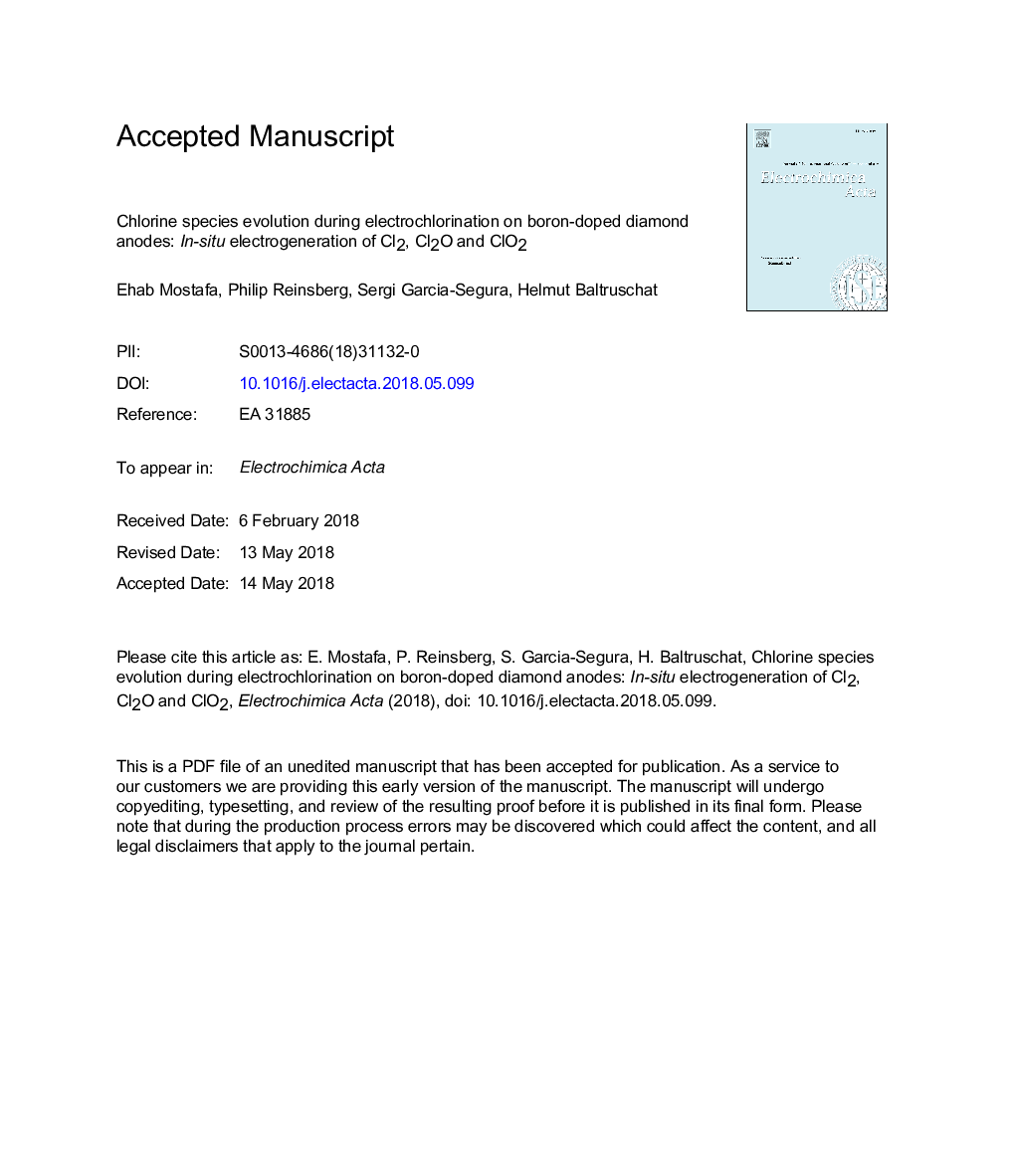| Article ID | Journal | Published Year | Pages | File Type |
|---|---|---|---|---|
| 6602488 | Electrochimica Acta | 2018 | 31 Pages |
Abstract
Chlorination is one of the most widely used disinfection and water treatment technologies. Electrochlorination has proved to be one of the most reliable applications of electrochemistry in water treatment with improved performance in comparison to conventional chlorination. Several research efforts have been devoted to the development of these technologies; however these studies barely considered the release of chlorine volatile species (Cl2, ClO2 and Cl2O). Here, a semi-quantitative analysis of various volatile species produced during the electrolysis of highly saline water (0.6â¯M NaCl) at BDD electrode has been conducted by differential electrochemical mass spectrometry (DEMS) using the dual thin layer flow through cell. The effect of solution pH and electrolyte flow rates on the release of volatile species has been considered. Electrolysis of 0.6â¯M NaClO4 evidenced the competition between O2 and Cl2 evolution towards the electrogenerated OH radicals during electrolysis in presence of chloride. Evolution of Cl2 was favored at acidic pH, whereas its evolution is inhibited at alkaline pH. The quantification of released species highlighted that the evolution of chlorine corresponds to a ca. 80% of the current efficiency, which is a significant contribution to the overall electrochlorination process.
Related Topics
Physical Sciences and Engineering
Chemical Engineering
Chemical Engineering (General)
Authors
Ehab Mostafa, Philip Reinsberg, Sergi Garcia-Segura, Helmut Baltruschat,
